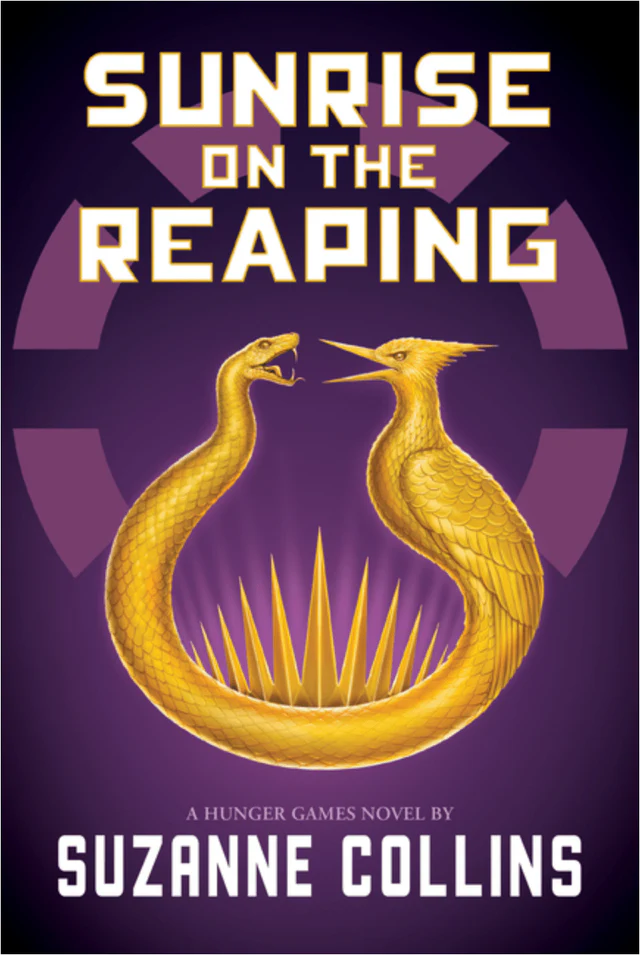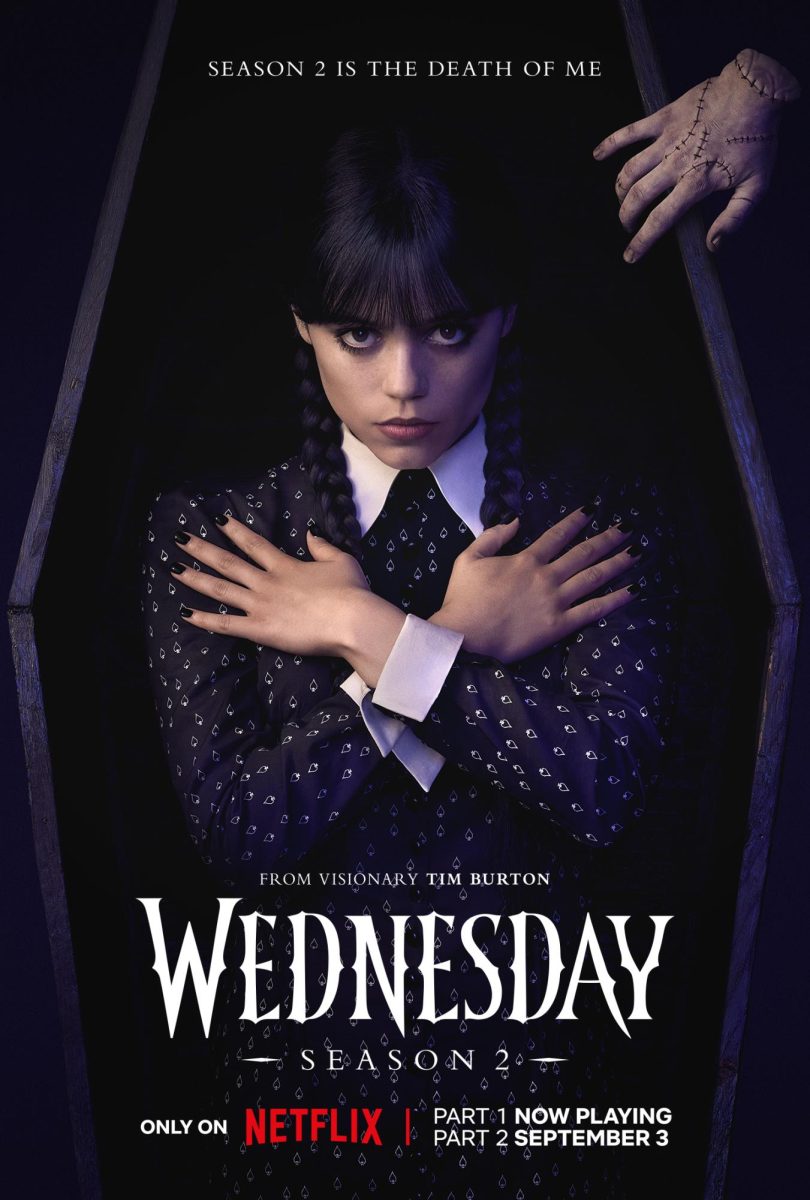“The Hunger Games” series remains one of the most popular book series of the 2000s, with its punchy action, suspenseful drama and meaningful themes paving the way for modern young adult literature. The trilogy, first published in 2008, is set in a dystopian America still reeling from an intense civil war. In this universe, the elite Capitol society picks two children from each of 12 “districts” to participate in the Hunger Games, where they battle it out until only one child remains. “Sunrise on the Reaping,” a prequel to the series, was released on March 18, 2025. The book follows Haymitch Abernathy, a secondary character in the original “Hunger Games” trilogy.
Though Collins gave hints and snippets to the events of the 50th Hunger Games, which Haymitch participated in, the book delves deep into his experience, and as with most of Collins’ books, explores important topics such as the influence of propaganda. “Sunrise on the Reaping” is the first Hunger Games novel told from the perspective of a victor other than Katniss Everdeen, the main character of the first three books, though in 2020 Collins released “The Ballad of Songbirds and Snakes,” which centered on the main antagonist of the series.
In traditional Hunger Games fashion, the story more or less begins on Reaping Day, when tributes are selected from each district. We know that every 25 years, the Capitol puts on a twist for the Games, known as the “Quarter Quell”. The 50th Games’ twist is that double the amount of tributes are reaped, four from each district instead of two, making it harder for just one person to win in the end.
The Haymitch we see in the original books, a pessimistic man who is almost never sober and is often considered a terrible mentor, is in stark contrast to the sharp-minded, caring 16-year-old at the beginning of “Sunrise”. As the book progresses, we begin to get some insight into Haymitch’s life prior to the games.
One noticeable thing is that, unlike Collins’ other protagonists, Katniss and Snow, Haymitch comparatively has much more to lose. He has a girlfriend who loves him very much, a job that he is progressing in and friends that he can rely on. Despite the poverty and hardship inherent to the place he lives, Haymitch has a steady, prosperous life planned out for himself, which is what makes it so much more upsetting when he is forced to participate in the Games, where he is unsure of whether he’ll live or die.
One of the many things that makes this book so good is the fact that it is inherently a tragedy. We know how the story goes because we see what happens in the future. We know that Haymitch wins, and we can assume that the game ends up pretty much the same as all the others do: with one winner. Still, Collins does a fantastic job making the book suspenseful, and because we don’t know specific details of what went down, there is so much room for twists and plot points that make it interesting despite already knowing the ending.
I additionally adored how Collins showed that the rebellion against the Capitol didn’t start with Katniss in the original trilogy. Tributes in all the games were protesting and rebelling in their own ways, refusing to let the Capitol profit off of their suffering and anguish.
Going into the book, I was most anticipating learning how Collins was going to change the game. Since every year the arena of the Hunger Games changes, there was no way of knowing exactly what it would look like. And Collins delivered. The arena is punchy, new and beautifully dangerous, providing a challenging landscape for the protagonists to navigate.
But what definitely stood out the most to me about the book is the characters. Fans of the novels will immediately recognize some familiar faces from “The Hunger Games” and “Catching Fire,” but Collins goes above and beyond in elaborating on previous characters and giving us insight into their backstories.
Haymitch himself is proven to be a very competent character, something we don’t get much of from him in the first three books. His love for his family, friends, and District 12 and his willingness to rebel against the Capitol prove him to be more like Katniss than is initially evident. Being able to see his thoughts and feelings gives additional insight into not just “Sunrise” but the series as a whole.
The new characters introduced, most evidently the tributes, are all so lovingly crafted and you can tell that Collins put a lot of work into not reusing character devices and choices. I personally adored all the District 12 characters, who shine as independent and definable from the very first page they’re introduced.
Of course, it wouldn’t be a Suzanne Collins novel without a deeper message. The one Collins most focused on for “Sunrise” was the impact of propaganda, even on those who recognize that it is propaganda. We see how certain things are cut and displayed by the Capitol to be more favorable towards them, something that continues into the original trilogy but is definitely played up in this book.
The book is packed with references to the Hunger Games books and even “The Ballad of Songbirds and Snakes”, and is definitely not for someone unfamiliar with the series. Collins doesn’t attempt to hold anyone’s hand to explain the setting and basic plot. Much of the basic structure of the country of Panem goes unexplained, as it assumes that readers are familiar with the world.
However, despite not working as a standalone book, “Sunrise on the Reaping” is a gem that thoughtfully explores the world of “The Hunger Games” prior to the original books. Collins’ care stands out, and it just feels so well planned. Every part of the book is ripe with meaning, and I’m sure bigger fans of the series than I will be able to pick out more, making it definitely worth the read.
Categories:
“Sunrise on the Reaping” hits the mark as new “Hunger Games” installment
Aditi Yashvant, Journey Manager
April 29, 2025
1
Tags:
More to Discover
About the Contributor

Aditi Yashvant, Journey Manager
Aditi has been doing journalism since 8th grade, when she took part in the Tribune’s Journey Program. She then continued taking journalism when she got to Dougherty. In her free time, Aditi loves to bake, crochet, read, and sew often, making her own clothes. Currently, she is obsessed with sourdough baking, and makes a loaf for her friends and family pretty much every weekend. If she could be anyone on the Tribune, she’d be Lily because her job is really cool and she’s really talented.







